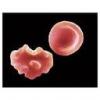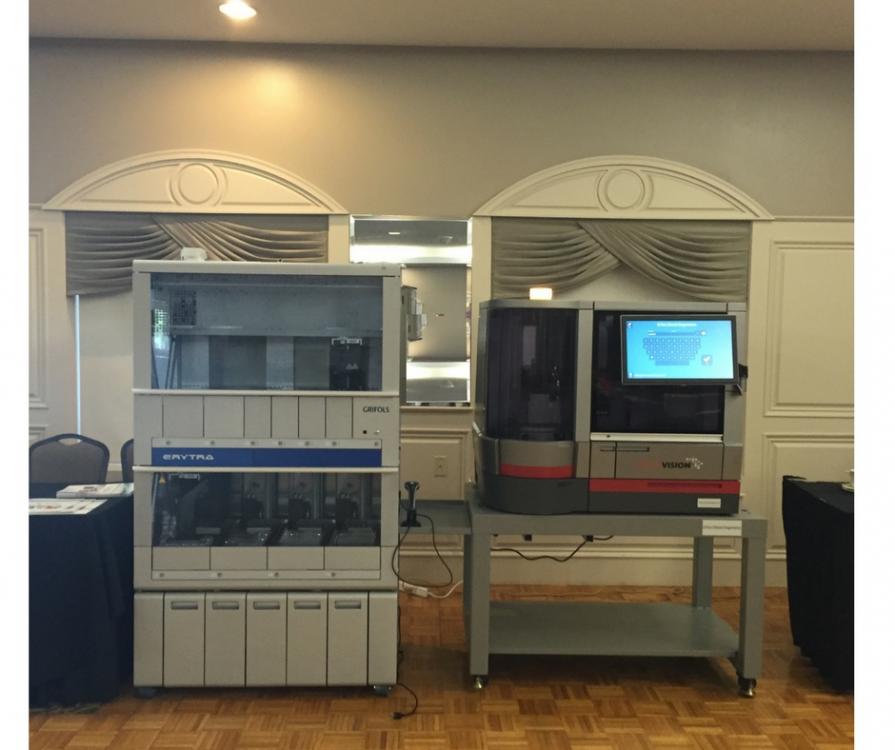Leaderboard
-
in all areas
- All areas
- Records
- Record Comments
- Record Reviews
- Jobs
- Jobs Comments
- Jobs Reviews
- Questions
- Question Comments
- Question Reviews
- Links
- Links Comments
- Files
- File Comments
- File Reviews
- Images
- Image Comments
- Albums
- Album Comments
- Records
- Record Comments
- Events
- Event Comments
- Blog Entries
- Blog Comments
- Topics
- Posts
- Status Updates
- Status Replies
-
Custom Date
-
All time
June 28 2007 - April 25 2024
-
Year
April 25 2023 - April 25 2024
-
Month
March 25 2024 - April 25 2024
-
Week
April 18 2024 - April 25 2024
-
Today
April 25 2024
-
Custom Date
03/03/2017 - 03/03/2017
-
All time
Popular Content
Showing content with the highest reputation on 03/03/2017 in all areas
-
Bacterial Testing - Apheresis Platelets
Susan Betler reacted to mld123 for a topic
Just trying to find out if anyone is performing bacterial testing on their apheresis units in the Transfusion Service prior to issue. Looks like the FDA is recommending that even apheresis units that are cultured by the blood supplier have a rapid bacterial test performed prior to issue on day 4 and day 5 of the shelf life of the unit. Anyone following this recommendation? If so, what test are you using? I have used the Verax test before, but wondered if there are others available.1 point -
Hi everyone, I would really encourage you to take a moment to read a blog article I wrote regarding a lab scientist's connection to their patients from "behind the scenes". This subject is very near and dear to my heart and I hope others find that it resonates with them as well. Please feel free to share any thoughts below the article in the comments section. Thank you for taking the time to click! And as always, thank you for being an integral part of our healthcare system. https://www.staffready.com/patient-behind-scenes/1 point
-

Use of Whole Blood in Massive Transfusions
John C. Staley reacted to kate murphy for a topic
Trauma docs now are looking for simulated WB - component therapy in the ratio of 1:1. They would LOVE fresh WB, but that ain't happenin'!1 point -

Bacterial Testing - Apheresis Platelets
MaryPDX reacted to kate murphy for a topic
As far as I know, Verax is the only FDA approved test for this. FDA is not mandating (yet) that we test on day 4 & 5. Though I do think that's coming. Currently, we're using Verax to extend the platelets to day 6 & 7.1 point -
Microscopic Examination
Likewine99 reacted to kirkaw for a topic
YAASSSSS! Dr. Issitt said that to me many times when I worked under his direction at Duke.1 point -

Use of Whole Blood in Massive Transfusions
kate murphy reacted to MaryPDX for a topic
Our facility was involved in the that study. As a result, in a massive the first box issued is 4RC and 4FFP (which we always have ready to go) thereafter it's 6RC 6FFP and 1u Platelets. We keep ahead with this until the massive is called off.1 point -

Use of Whole Blood in Massive Transfusions
Ward_X reacted to kate murphy for a topic
The military does use "walking" donors - other soldiers who have been tested within a time frame, and are available for donation. Field hospitals are definitely much more sophisticated now than even 10 yrs ago. Field hospitals do have plasma and platelets as well as red cells available. TXA (tranexamic acid) is being used extensively in urban trauma centers. Recombinant activated FVIIa (NovoSeven)is less in vogue at the moment due to many bleeding episodes. Many of our trauma surgeons are ex-military - or active army reserve - and they are big advocates for simulated whole blood. Some of our trauma surgeons will be publishing soon on experience with simulated WB being almost as good as WB. They know nothing is as good as fresh WB, but understand that's an unrealistic goal.1 point -

Use of Whole Blood in Massive Transfusions
SMILLER reacted to Malcolm Needs for a topic
In addition, as I understand it, treatment of blunt trauma is different from treatment of sharp trauma (although I can't remember which way round it is - which doesn't help one iota on the site, I know!), but I do know that tranexamic acid, given at the site of the accident (or whatever) prior to moving the patient to hospital reduces the volume of the transfusion required and is associated with fewer deaths.1 point -

FLOWCHART FOR ELECTRONIC CROSSMATCH
Ensis01 reacted to mollyredone for a topic
That's because I just made it! Maybe I should put it in the library!1 point -
Yes. Without the stir ball the Echo is sampling a reduced number of indicator red cells/more diluent. The longer the vial is on the instrument without the stir ball, the more settled the red cells become and fewer and fewer of them are sampled/added to the test well. In the package insert for the indicator cells under Limitations: "Addition of too few indicator cells, as might occur with improper mixing of the reagent or through hemolysis of red cells, will cause weak falsely positive results." The vial should be discarded and a new vial with a stir ball loaded on the instrument before performing any additional testing. You'll see funky results with A and B cells missing the stir ball, too. Those vials should also be discarded and replaced with new vials/stir ball added.1 point
-
1 point
-

Grifols Erytra
MeganPLT reacted to Brenda K Hutson for a topic
So we went LIVE with our Erytra this week. We had a couple of hardware issues along the way (though nothing major). One change I made (and this was just a personal decision) to prophylactically prevent 1 type of issue, is that we changed the double-layer racks to single layer (so when we take them out of the box....we have saved empty racks after use so we place the top layer in a 2nd rack). We do that because in training, they emphasize how you have to make sure the cards are patted down; that a corner doesn't pull back up, like maybe from your glove sticking; that the drawers must be closed very carefully or it could jar the cards. Well, you can "teach" your staff all of those things, but you KNOW it is going to happen (some heavy-handed tech. is going to come along and just slam the door shut.....then you are in trouble ). So by making single-layer racks, we hope to decrease gripper vs. card issues. Our workload is not so high that we needed the 2nd layer....even filling the Erytra with single-layer card racks in every space, is more than we would use in 24 hours. One thing to be careful with if you do that though is that when you are handling the cards, do it gently so as not to cause splashing within the wells; otherwise, you create another problem. Another change we made is that it was initially connected to a drain. After training (and learning to do decontamination), we decided to have it switched to reagent waste bottles. Again, our workload is such that we would not even fill 1 of those bottles in 24 hours much less 2; so we cut down on the tedious decontamination process. You also learn some things the hard way.....like if you remove a solution bottle to add more solution, don't close the drawer! If you do and the analyzer is priming (or wants it for something else), it will disable the probes. So leave the drawer open during the process. There were several things like that we learned by making the mistake. The more we use it, the more we learn (there is a lot to learn with the touchscreen). But we still really like it. There are some software changes we would like so they are adding them to a new version coming out next year. Also, they definitely need to "beef up" their panels (and they know that). All in all.....a good purchase. My only outstanding concern is some missed weak antibodies (which we will continue to watch for.....for now, every questionable antibody screen will be repeated by Tube PeG). Brenda Hutson, MT(ASCP)SBB1 point -
I had a hematologist once that wanted all of her patients to get "double-filtered" products. I asked her to provide me a reference to bring to Transfusion Committee; she couln't find one. Request denied! LOL1 point
-
Catching these patients untransfused is difficult. Submit a sample for full molecular phenotype. At a minimum, try to determine Rh and K type. If your antibody screen is negative, select crossmatch compatible units. If positive, the next step is to 0.2M DTT treat your panel cells to help distinguish that the observed reactivity is due to daratumumab. The reactivity that we've seen is usually variable in saline techniques, resembling what use to be referred to as "high titered, low advidity" or HTLA antibodies. The 0.2M DTT works very well, but I would not recommend any micro reads. Most common antibodies can be ruled-out with 0.2M DTT treatment, but not antibodies directed at the Kell system antigens. (There are other antigens "destroyed" by the DTT treatment, but they are not pertinent to this immediate discussion.) As such, if no underlying antibodies were detected, our transfusion recommendation is to select K- units if the patient has typed K-. While some recommend phenotyped matched units, we do not. Having a full phenotype does not absolve a blood bank from determining what the reactivity is due to and if any new antibodies have developed. Requesting phenotyped matched units, without the presence of antibody is a waste of a potential resource, drives up costs unnecessarily and may result in a delay that is longer than resolving the actual work-up if the patient's type is rare enough.1 point
-
Any blood supplier making and distributing LR products must be rigid product qualifications. The wbc reduction is must greater than bedside filters. I would be concerned about someone instituting a blood administration process that BB hadn't been involved with to assure it does follow manufacturer's instructions, isn't having some deleterious affect etc. If it was observed by an AABB inspector and it was not kosher, you are going to be the one getting a non-conformance.1 point
-
Apheresis LR Platlets and LR filter
Ensis01 reacted to Teristella for a topic
Why? From my brief stint in components at a blood supplier, I remember leukoreduction methods being QC'd fairly well. Physicians should be pre-medicating patients and requesting irradiated blood as needed, not double filtering products to some unknown end. How do they even know it's doing anything qualitatively substantial?1 point -
Sounds like a waste of resources to me1 point
-
Nope. I think it's a great idea to have different methods and different manufacturers.1 point
-
I am in China, I don't know the rules or regulations in the USA. I will keep tube as a backup since gel method sometimes are too sensitive and easy to be interfered by some factors, such as cold antibodies, proteins or sickle cells.1 point



